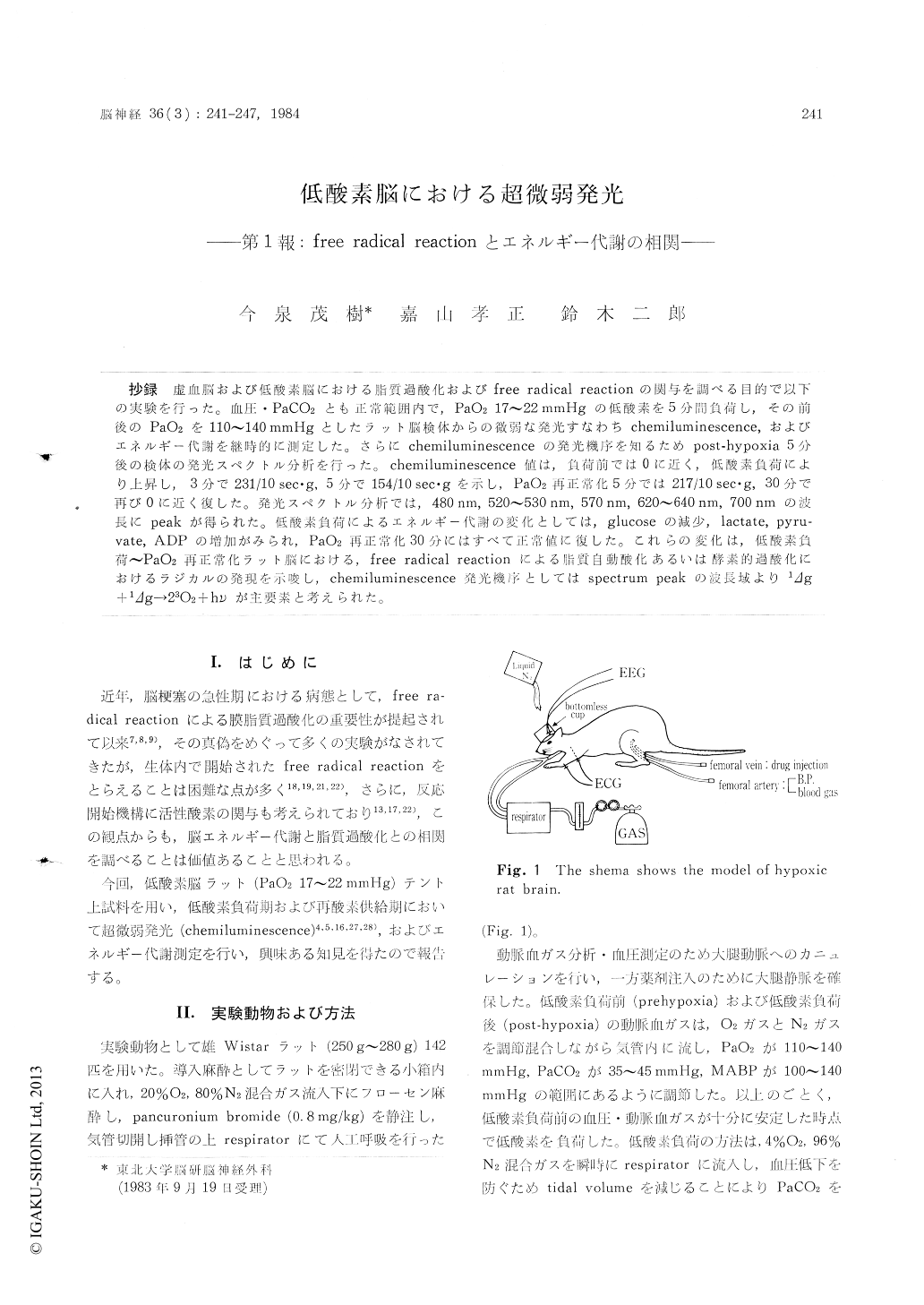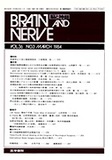Japanese
English
- 有料閲覧
- Abstract 文献概要
- 1ページ目 Look Inside
抄録 虚血脳および低酸素脳における脂質過酸化およびfree radical reactionの関与を調べる目的で以下の実験を行った。血圧・PaCO2とも正常範囲内で,PaO217〜22 mmHgの低酸素を5分間負荷し,その前後のPaO2を110〜140mmHgとしたラット脳検体からの微弱な発光すなわちchemiluminescence,およびエネルギー代謝を継時的に測定した。さらにchemiluminescenceの発光機序を知るためpost-hypoxia 5分後の検体の発光スペクトル分析を行った。chemiluminescence 値は,負荷前では0に近く,低酸素負荷により上昇し,3分で231/10sec・g,5分で154/10sec・gを示し,PaO2再正常化5分では217/10 sec・g,30分で再び0に近く復した。発光スペクトル分析では,480 nm,520〜530 nm,570 nm,620〜640 nm,700 nmの波長にpeakが得られた。低酸素負荷によるエネルギー代謝の変化としては,glucoseの減少,lactate,pyru—vate,ADPの増加がみられ,PaO2再正常化30分にはすべて正常値に復した。これらの変化は,低酸素負荷〜PaO2正常化ラット脳における,free radical reactionによる脂質自動酸化あるいは酵素的過酸化におけるラジカルの発現を示唆し,chemiluminescence発光機序としてはspectrurn peakの波長域より1Δg+1Δg→23O2+hνが主要素と考えられた。
To explore the possibility that cerebral ischemia or cerebral hypoxia may initiate a series of free radical reactions of brain tissue lipid constituents, we measured sequential change of chemilumine-scence and energy metabolites during brain hy-poxia in rat. The hypoxic brain was induced by arterial hypoxemia (PaO2 17-22 mmHg) with nor-mocapnia (PaCO228-38 mmHg) and normotension (MABP 100-140 mmHg).
4%O2-96%N2 mixed gas was used as the repla-cement for obtaining lowered PaO2. We made another attempt to analyze chemiluminescence spectra on purpose of luminous mechanism inves-tigation.
No peroxidation occurred in prehypoxic state since there were no photon counts, however, che-miluminescence began to rise up in hypoxic state and remained high value in posthypoxic early state. Namely in hypoxic state, 3-min period show-ed 231 counts/10 sec・g and 5-min period showed 154 counts/10 sec・g. In posthypoxic state, 5-min period showed 217 counts/10 sec・g and 30-min period showed a similar decrease as prehypoxic state. The chemiluminescence spectroanalysis show-ed five peaks at 480 nm, 520-530 nm, 570 nm, 620-640 nm, 700 nm in wavelength. As to sequential changes of energy metabolism, hypoxia caused marked brain lactic acidosis, increase in ADP, pyruvate and a fall in glucose. However, all meta-bolites recovered at 30-min period in posthypoxic state, which suggests this was reversible brainhypoxia. A transition of chemiluminescence and energy metabolites suggests the occurrence of free radical reaction in hypoxic and posthypoxic brain.
The spectroanalysis reveals the luminous mecha-nism as follows 1Δg+1Δg→23O2+hν

Copyright © 1984, Igaku-Shoin Ltd. All rights reserved.


